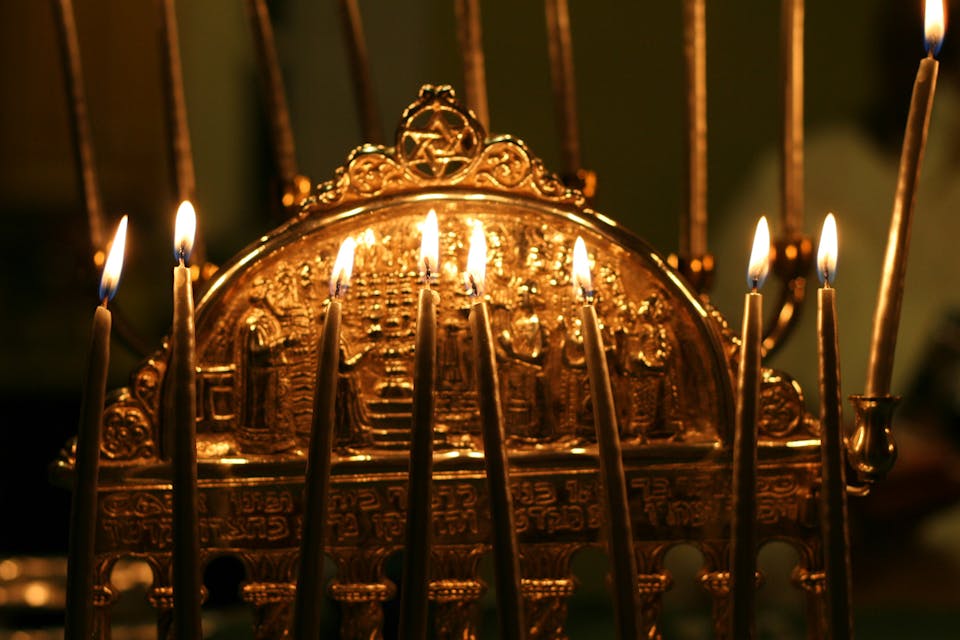
December 29, 2016
The Jewish Tradition Unfolds in Fire. Here’s How, and Why
What are we to make of the fiery images, stories, and rituals that inform Jewish liturgy and Jewish self-understanding?
Stories of fire, images of fire, rituals of fire—the Jewish tradition unfolds in flames. During the Hanukkah festival, fire is central. For eight days, Jews commemorate the rededication of the Temple in Jerusalem by kindling the flames of the menorah and by recalling the fire of the altar, ever-present and never to be extinguished. As Rabbi Jonathan Sacks beautifully describes:
Even after the Temple was destroyed more than two centuries later by the Romans, the Hanukkah lights bore witness to the fact that after the worst desecration, something pure remains, lighting a way to the future. The Hanukkah lights became one of the great symbols of Jewish hope.
But Hanukkah is hardly unique in putting fire at the center. The Passover story begins with a burning bush that remains unconsumed. At the Passover seder, Jews compare the ten plagues of Egypt with “blood, fire, and pillars of smoke”; discuss the fires that rained down upon Egypt in the midst of a hailstorm; invoke the paschal lamb and the obligation to roast it in fire, an action that preceded the exodus from Egypt when God protected the Israelites by means of a “pillar of fire.” And the seder concludes with a blessing for the retelling of the exodus and the hope for a restoration of burnt offerings and the rebuilding of Jerusalem with fire. On the final day of Passover, in the midst of a celebratory time, Jews light candles of remembrance for the departed.